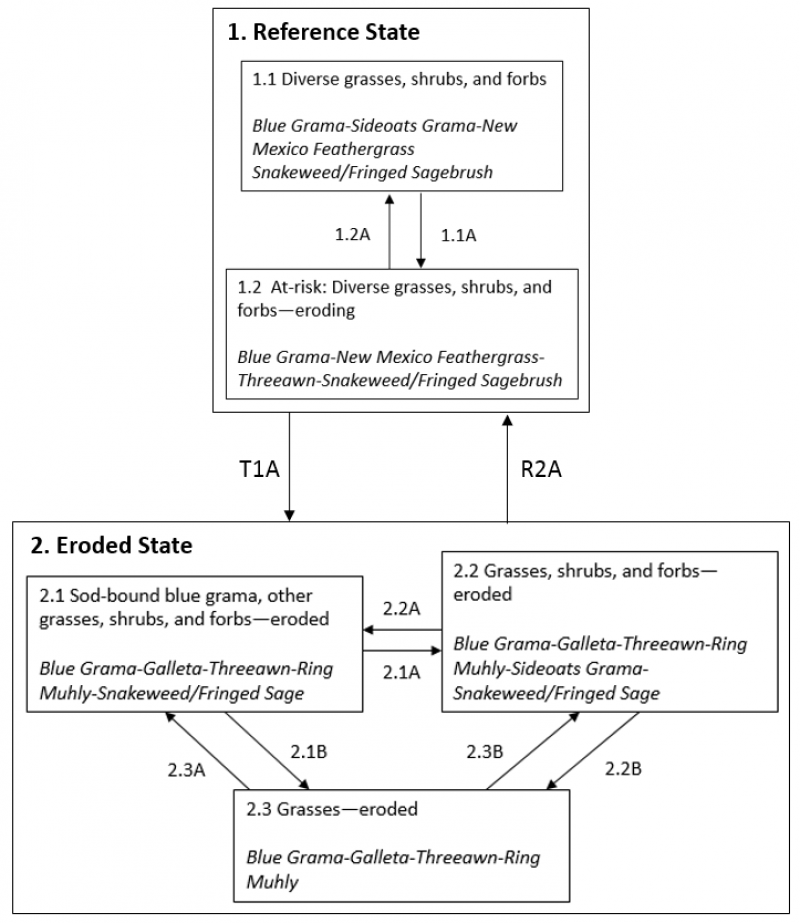Ecological dynamics
Plant tables have not been developed for this site. Until such time as they can be updated, use the plant tables in the referenced literature that correlates to this concept (refer to the Correlation to Current Ecological Sites sub-section at the bottom of this narrative). With respect to the imperfect alignment of such correlations, be aware of these shortcomings in their applicability to conservation planning.
Early work by Kuchler (1964) identified the potential natural vegetation type for the Canadian Plateaus LRU as that of the grama/buffalograss short grass prairie. The Limy ecological site is dominated by short grasses, but also contains a mix of shrubs, forbs, and succulents. As is typical of plant communities, pronounced annual variations in precipitation translate to considerable short-term fluctuations in annual production within a given plant community phase.
There are numerous variables which affect the range of characteristics for this ecological site. Variables such as elevation, latitude, and orographic effects create a climatic gradient which influence the distribution of C3 and C4 plants. Soil properties such as surface texture, depth to clay layer, parent material, and accumulated salts affect species diversity and composition. Natural disturbances such as drought and wildfire affect species density and cover.
The climate gradient across the Canadian Plateaus LRU shows a greater distribution of C3 plants such as western wheatgrass and bottlebrush squirreltail where temperatures are cooler, and moisture is more abundant. Where surface texture trends toward clay loam, western wheatgrass, galleta, and vine mesquite grass increase. In areas of sandier surface textures, sideaoats grama, and sand dropseed are more likely to occur. Refer to Appendix C to see scientific names and plant codes alongside common names.
Fire is a disturbance regime that reduces succulents and shrubs while stimulating grasses and forbs. Not all fires are equal. According to Gebow (2001), fire effects in the same location will vary, especially with fire timing, both seasonally and within the scheme of year-to-year moisture variation. Precipitation during seasons before and after fire has a major effect on recovery of plants. Fire promotes rhizomatous plant species, such as western wheatgrass, that can take advantage of below-ground rhizomes from which tillering is rapidly initiated.
Grazing pressure will tend to favor grasses such as blue grama and purple threeawn as well as shrubs such as broom snakeweed and prairie sagewort.
Correlation to Current Ecological Sites:
The Limy ecological site is currently correlated to the Loamy Upland (R070AY001NM) site in several locations. However, the former concept is quite broad, and does not distinguish potential New Mexico feathergrass habitat from other, less limy sites. This new Limy site is a subdivision of the former.
(From the Loamy Upland ecological site description, R070AY001NM): Approximately 90 percent of the total yield is from species that furnish forage for grazing. Continuous grazing during the growing season will cause the more desirable forage plants such as western wheatgrass, bottlebrush squirreltail, galleta, sideoats grama, and winterfat to decrease. Species most likely to increase are blue grama, ring muhly and buffalograss. As the ecological condition deteriorates, it is accompanied by a sharp increase of blue grama. Continuous heavy grazing will cause blue grama to form a low, dense turf, which is low in productivity. A system of deferred grazing, which varies the time of grazing and rest in the pastures during successive years is needed to maintain or improve the plant community. Grazing western wheatgrass during the months of May and June will cause a sharp decrease; therefore, rest during this period will allow western wheatgrass to grow and reproduce.
Annual production by plant type
Plant Type-------Low(Lb/Acre) -------RV(Lb/Acre)-------High(Lb/Acre)
Grass/Grasslike -------610--------------860---------------------1100
Forb---------------------130--------------130---------------------140
Shrub/Vine------------130--------------130---------------------130
Total---------------------870--------------1120-------------------1370
Community 1.1 plant community composition
Common Name--------------Symbol-------Scientific Name-------Annual Production (Lb/Acre)
GRASS/GRASSLIKE
1-------blue grama--------------BOGR2-------Bouteloua gracilis---------312–357
2-------western wheatgrass----PASM-------Pascopyrum smithii-------178–223
3-------squirreltail----------------ELEL5-------Elymus elymoides---------89–133
4-------James' galleta-------------PLJA-------Pleuraphis jamesii----------43–89
5-------sideoats grama-----------BOCU-------Bouteloua curtipendula---43–89
6-------threeawn------------------ARIST-------Aristida-----------------------25–44
7-------ring muhly-----------------MUTO2------Muhlenbergia torreyi-----25–44
8-------buffalograss---------------BODA2------Bouteloua dactyloides-----25–44
9-------common wolfstail--------LYPH---------Lycurus phleoides-----------25–44
10-------sand dropseed-----------SPCR---------Sporobolus cryptandrus----25–44
FORB
12-------Forb, annual---------------2FA----------Forb, annual------------------10–48
13-------Forb, perennial------------2FP----------Forb, perennial---------------10–48
14-------Cuman ragweed----------AMPS---------Ambrosia psilostachya------10–25
15-------scurfpea--------------------CULLE---------Cullen-------------------------5–25
16-------prairie clover---------------DALEA-------Dalea---------------------------5–25
17-------dotted blazing star---------LIPU----------Liatris punctata--------------5–25
18-------locoweed--------------------OXYTR-------Oxytropis---------------------5–25
19-------upright prairie coneflower-RACO3------Ratibida columnifera-------5–25
20-------scarlet globemallow--------SPCO--------Sphaeralcea coccinea-------5–25
SHRUB/VINE
21-------winterfat---------------------KRLA2-------Krascheninnikovia lanata---29–48
22-------prairie sagewort-------------ARFR4-------Artemisia frigida-------------29–48
23-------Shrub, deciduous-------------2SD---------Shrub, deciduous-------------29–48
(From the San Miguel County Soil Survey) The potential plant community is mainly blue grama, western wheatgrass, sideoats grama, and galleta. As the range deteriorates, the proportion of these forage plants decreases, the proportion of ring muhly and threeawn increases, and blue grama forms a dense turf that is low in productivity. Grazing management should be designed to increase the productivity and reproduction of western wheatgrass, vine mesquite, and fourwing saltbush. Annual production averages 1,200 pounds per acre in favorable years and 700 pounds per acre in normal years.
(From Union County Soil Survey) Clayey Range Site--Litle clay loam is the only soil in this range site. This soil has a clay loam surface layer and a clay subsoil. It is well drained and has slopes of 1 to 9 percent. Permeability is slow, runoff is rapid, and the water-supplying capacity is low to moderate. Decreasers make up about 40 percent of the vegetation when this site is in excellent condition. The main decreaser plants are western wheatgrass and alkali sacaton. Increasers make up about 60 percent of the vegetation when the site is in excellent condition. The main increasers are blue grama, buffalograss, galleta, ring muhly, mat muhly, four wing saltbush, and winterfat. In poor condition, the site supports nearly solid stands of galleta in many places and some low, sodlike blue grama, buffalograss, mat muhly, and ring muhly. The soil in this site is suitable for contour furrowing, pitting, and range seeding. If the range is in excellent condition, the total annual production of all plants is 1,600 pounds per acre air-dry weight in favorable years, and is 500 pounds in dry years. On range in excellent condition, the total annual production of plants that provide forage for cattle is 1,524 pounds, air-dry weight, in favorable years and 400 pounds in dry years.
Plants that commonly occur on this site include:
Grasses: blue grama, western wheatgrass, galleta grass, New Mexico feathergrass, sideoats grama, buffalograss, ring muhly, and threeawn.
Forbs: western wallflower, curlycup gumweed, groundsel, scarlet globemallow, and fleabane.
Shrubs/succulents: broom snakeweed, prairie sagewort, and winterfat.
State 1
Reference State
This state represents the most ecologically stable state in terms of resistance to erosion. Moreover, this state has the highest potential for productivity and plant diversity.
Community 1.1
Diverse grasses, shrubs, and forbs (diagnostic plant community)
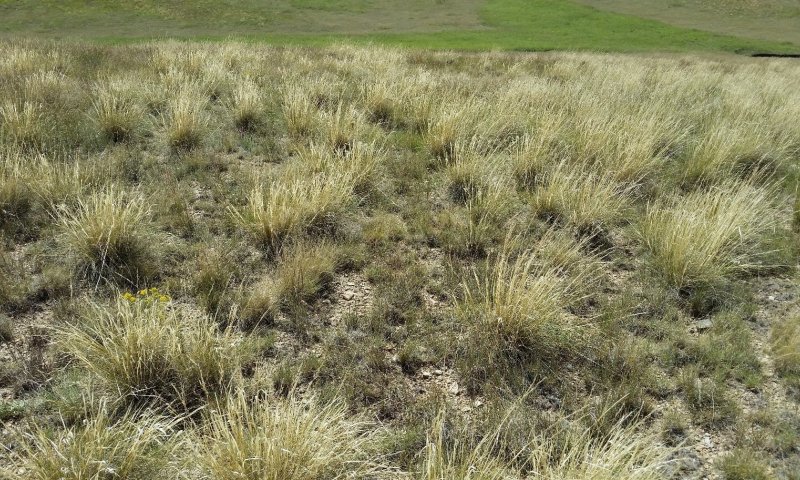
Figure 5. Community 1.1 on a plateau shoulder in Colfax County, August 2018. The Ephemeral Drainageways site is visible in the background. New Mexico feathergrass is not always so dominant in this phase.
This plant community occurs on eroded soils—where productive potential and species diversity have been lost with topsoil and the seedbank it held. This community is a mix of grass, shrub, and forb species; with grasses usually being dominant. However, shrubs are much more abundant than in Community 1.2, and reach codominance at some locations. Among the grasses, warm-season species—particularly blue grama in a sod-bound state—are dominant, but cool-season grasses are at least well-represented. While one or more decreaser species (sideoats grama and/or western wheatgrass) is often present, New Mexico feathergrass is notably absent. Conversely, increaser species such as purple threeawn and ring muhly are often quite abundant. If topsoil remains, its thickness has been reduced considerably. Foliar cover is between 50 and 75 percent, and bare ground ranges from 10 to 40 percent. Total canopy cover of warm-season grasses is between 30 and 60 percent. Cool-season grass cover is typically 5 percent or less. Shrubs and forbs account for up to 35 percent and 5 percent cover, respectively. Encroaching oneseed juniper has been observed on this phase, and is especially likely where this site lies directly below the Limy Escarpments site. Annual production averages around 650 pounds per acre, but can range between 450 and 1,000 pounds per acres, depending mostly on annual weather patterns.
This community exists where season-long grazing has been practiced, thus it has experienced an increase in shrub vigor and a decrease in grass vigor. Under heavy, continuous herbivory, the depth of grass roots decreases—giving shrubs a competitive advantage in acquiring water and nutrients. As the turnover of grass roots diminishes, energy flow begins to lessen due to a decrease in soil organic matter. The loss of organic matter in situ, coupled with a loss in topsoil that occurs during transition T1A, translate to reduced water-holding capacity and nutrient availability. While prolonged grazing would have been uncommon prior to the introduction of livestock, fire was an important factor in keeping shrub species from gaining a competitive advantage and stimulating the growth of grasses.
Community 1.2
At risk: Diverse grasses, shrubs, and forbs—eroding
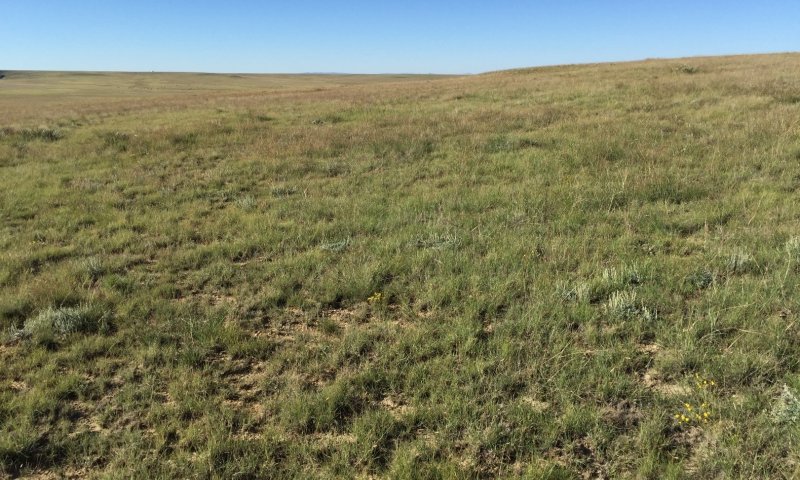
Figure 6. Community 1.2 on a gentle plateau riser in Colfax County, September 2017. New Mexico Feathergrass, sideoats grama, and wolfstail are all well-represented here.
This community is a mix of grass, shrub, and forb species; with grasses being dominant. However, shrubs are much more abundant than in Community 1.1, and approach codominance at some locations. Among the grasses, warm-season species are dominant, but cool-season grasses are at least well-represented. Decreasers such as New Mexico feathergrass, sideoats grama, and western wheatgrass are present, but with lesser abundance than in the reference community. Some topsoil remains, but its thickness has been reduced considerably. Foliar cover is between 55 and 80 percent, and bare ground ranges from 10 to 40 percent. Total canopy cover of warm season grasses is between 30 and 65 percent. Cool-season grass cover is typically 5 percent or less, but can range as high as 20 percent. Shrubs and forbs account for up to 25 percent and 5 percent cover, respectively. Encroaching oneseed juniper has been observed on this phase, and is especially likely where this site lies directly below the Limy Escarpments site. Annual production averages around 700 pounds per acre, but can range between 500 and 1,100 lbs/ac, depending mostly on annual weather patterns.
This community exists where season-long grazing has been practiced, thus it has experienced an increase in shrub vigor and a decrease in grass vigor. Under heavy, continuous herbivory, the depth of grass roots decreases—giving shrubs a competitive advantage in acquiring water and nutrients. As the turnover of grass roots diminishes, energy flow begins to lessen due to a decrease in soil organic matter. The loss of organic matter in situ, coupled with a loss in topsoil that occurs during pathway 1.2A, translate to reduced water-holding capacity and nutrient availability. While prolonged grazing would have been uncommon prior to the introduction of livestock, fire was an important factor in keeping shrub species from gaining a competitive advantage and stimulating the growth of grasses.
Pathway P1.1A
Community 1.1 to 1.2
Diverse grasses, shrubs, and forbs (diagnostic plant community)
At risk: Diverse grasses, shrubs, and forbs—eroding
This pathway represents a period of heavy grazing, typically season-long, which advantages the growth and reproduction of shrubs and suppresses herbaceous species that are more palatable and/or less resilient under grazing pressure. Under such a grazing regime, and in the absence of fire and/or chemical treatments, broom snakeweed and fringed sage increase in abundance and vigor. Early seral grasses such as purple threeawn and ring muhly also increase under continuous grazing. Conversely, western wheatgrass, sideoats grama, and New Mexico feathergrass will diminish unless given significant periods of rest during their growing seasons.
Despite having significant gravel cover, this site is quite susceptible to erosion. As grass cover diminishes and soils are trampled during continuous grazing, soils become even more vulnerable to the effects of wind, raindrop impact, and runoff. Thus, significant amounts of soil are lost in this pathway.
Pathway P1.2A
Community 1.2 to 1.1
At risk: Diverse grasses, shrubs, and forbs—eroding
Diverse grasses, shrubs, and forbs (diagnostic plant community)
This pathway represents prescribed grazing or rest from grazing. In either case, herbaceous plants that are palatable and/or sensitive to grazing increase in vigor and abundance, and shrubs are at a competitive disadvantage.
Community 2.1
Sod-bound blue grama, other grasses, shrubs, and forbs—eroded
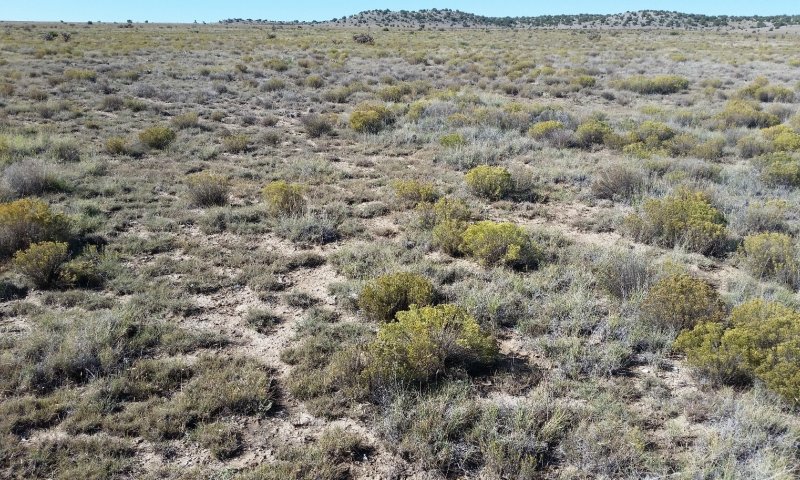
Figure 7. Community 2.1 on a fan remnant in Mora County, October 2018. Shrub dominance is rather moderate for this phase.
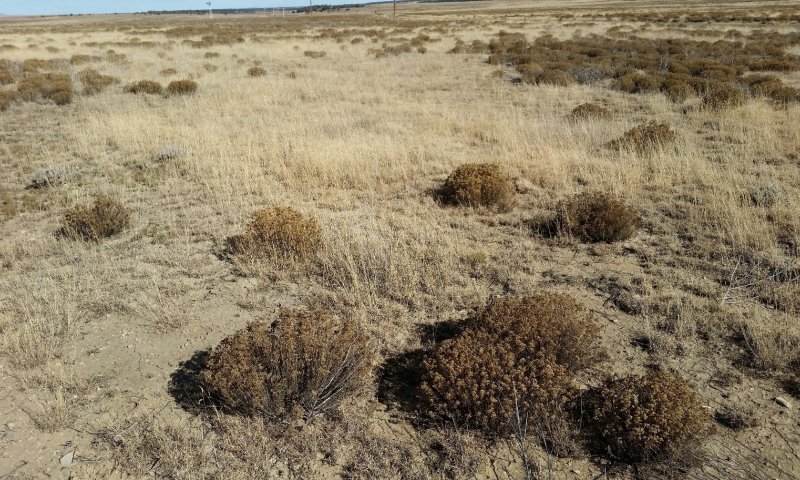
Figure 8. A plant community transitioning from phase 2.1 to phase 2.3 in San Miguel County, November 2017. Most of the broom snakeweed here is dead, and most of the blue grama is sod-bound.
This plant community occurs on eroded soils—where productive potential and species diversity have been lost with topsoil and the seedbank it held. This community is a mix of grass, shrub, and forb species; with grasses usually being dominant. However, shrubs are much more abundant than in Community 1.1, and reach codominance at some locations. Among the grasses, warm-season species are dominant, but cool season grasses are at least well-represented. While one or more decreaser species (sideoats grama and/or western wheatgrass) is often present, New Mexico feathergrass is notably absent. Conversely, increaser species such as purple threeawn and ring muhly are often quite abundant. If topsoil remains, its thickness has been reduced considerably. Foliar cover is between 50 and 75 percent, and bare ground ranges from 10 to 40 percent. Total canopy cover of warm season grasses is between 30 and 60 percent. Cool-season grass cover is typically 5 percent or less. Shrubs and forbs account for up to 35 percent and 5 percent cover, respectively. Encroaching oneseed juniper has been observed on this phase, and is especially likely where this site lies directly below the Limy Escarpments site. Annual production averages around 650 pounds per acre, but can range between 450 and 1,000 lbs/ac, depending mostly on annual weather patterns.
This community exists where season-long grazing has been practiced, thus it has experienced an increase in shrub vigor and a decrease in grass vigor. Under heavy, continuous herbivory, the depth of grass roots decreases—giving shrubs a competitive advantage in acquiring water and nutrients. As the turnover of grass roots diminishes, energy flow begins to lessen due to a decrease in soil organic matter. The loss of organic matter in situ, coupled with a loss in topsoil that occurs during transition T1A, translate to reduced water-holding capacity and nutrient availability. While prolonged grazing would have been uncommon prior to the introduction of livestock, fire was an important factor in keeping shrub species from gaining a competitive advantage and stimulating the growth of grasses.
Community 2.2
Blue grama, other grasses, shrubs, and forbs—eroded
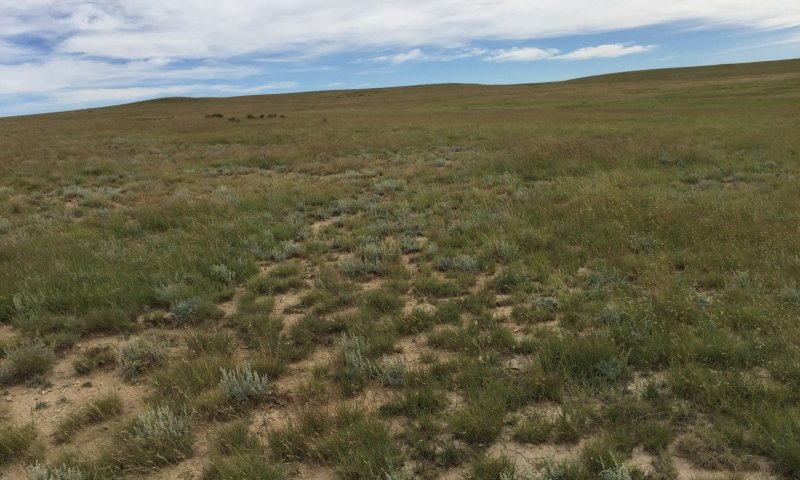
Figure 9. Community 2.2 in Colfax County, September 2017. Note the cespitose habit of blue grama. While this grass species has recovered to some degree, New Mexico Feathergrass and topsoil remain absent.
This plant community occurs on eroded soils—where productive potential and species diversity have been lost with topsoil and the seedbank it held. This community is a mix of grass, shrub, and forb species; with grasses being dominant. However, shrubs are typically quite abundant. While at least one cool-season grass species generally remains, warm-season grasses—particularly blue grama with a sod-bound habit—are quite dominant. Decreasers such as sideoats grama and western wheatgrass are often low in abundance, and New Mexico feathergrass is absent. Conversely, increaser species such as purple threeawn and ring muhly are often quite abundant. The original topsoil is either gone or very thin. The most notable difference between communities 2.2 and 2.1 is that in the former, blue grama has recovered to a cespitose (bunchgrass) habit. Foliar cover is between 55 and 80 percent, and bare ground ranges from 10 to 40 percent. Total canopy cover of warm-season grasses is between 35 and 70 percent. Cool-season grass cover is typically 5 percent or less. Shrubs and forbs account for up to 20 percent and 5 percent cover, respectively. Annual production averages around 700 pounds per acre, but can range between 500 and 1,000 pounds per acre, depending mostly on annual weather patterns.
While this community has not experienced season-long grazing in a number of years, it still shows evidence of such management in the past. Most notably, topsoil is either absent or else quite thin. Thus, water-holding capacity and nutrient availability are both lower in the soils here than in State 1. Since the turnover of grass roots is the main driver of decomposition in grassland soils, this community can be expected to exhibit greater rates of nutrient cycling and accumulation of soil organic matter than community 2.1. While prolonged grazing would have been uncommon prior to the introduction of livestock, fire was an important factor in keeping shrub species from gaining a competitive advantage and stimulating the growth of grasses. Without this variable, shrubs will remain competitive.
Community 2.3
Grasses—eroded

Figure 10. Community 2.3 in Colfax County, August 2018. Blue grama is sod-bound and dominant, and shrubs are nearly absent.
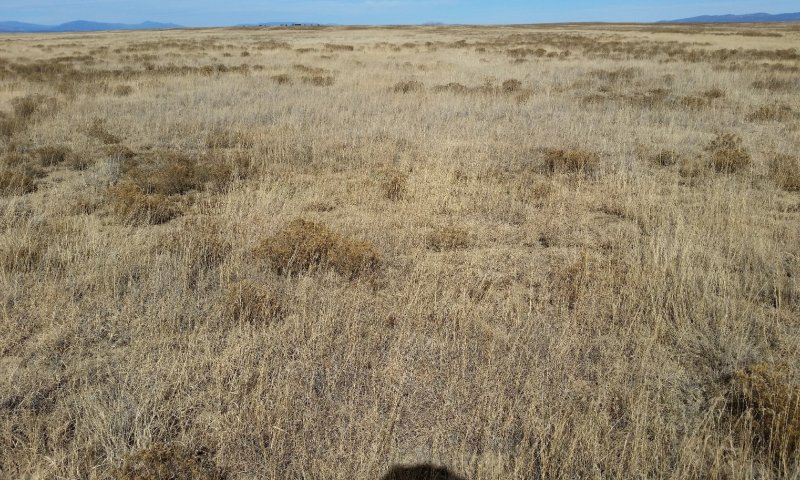
Figure 11. Figure 10. Community 2.3 in San Miguel County, November 2017. This site was chemically treated 5 years prior. Note that shrubs have already re-established, and the community is transitioning to phase 2.2.
This plant community typically occurs where herbicides have recently been applied to suppress shrubs. Thus, grasses are dominant. However, species richness among grasses is no higher than in communities 2.1 and 2.2; and total species richness is quite low. While decreasers such as sideoats grama and western wheatgrass are present, their abundance is generally low, and New Mexico feathergrass is absent. Foliar cover is between 60 and 90 percent, and bare ground ranges from 5 to 30 percent. Total canopy cover of warm-season grasses is between 50 and 80 percent. Cool-season grass cover is typically 5 percent or less. Shrubs and forbs each account for less than 5 percent and 5 percent cover. Annual production averages around 800 pounds per acre, but can range between 600 and 1,000 pounds per acre, depending mostly on annual weather patterns.
Pathway P2.1A
Community 2.1 to 2.2
Sod-bound blue grama, other grasses, shrubs, and forbs—eroded
Blue grama, other grasses, shrubs, and forbs—eroded
Community Pathway: This pathway represents prescribed grazing or rest from grazing. In either case, herbaceous plants that are palatable and/or sensitive to grazing increase in vigor and abundance, and shrubs are at a competitive disadvantage. The most obvious change is that blue grama recovers from its sod-bound habit and begins to assume the habit of a bunchgrass.
Pathway P2.1B
Community 2.1 to 2.3
Sod-bound blue grama, other grasses, shrubs, and forbs—eroded
This pathway represents the suppression of shrubs. This can result from a dry period during late summer, or from chemical treatments. Since fire requires significant biomass, this disturbance is probably quite rare in Community Phase 2.1.
Pathway P2.2A
Community 2.2 to 2.1
Blue grama, other grasses, shrubs, and forbs—eroded
Sod-bound blue grama, other grasses, shrubs, and forbs—eroded
This pathway represents a period of heavy grazing, typically season-long, which advantages the growth and reproduction of most shrubs, and suppresses herbaceous species that are more palatable and/or less resilient under grazing pressure. Blue grama responds to grazing pressure by assuming a sod-bound habit.
Pathway P2.2B
Community 2.2 to 2.3
Blue grama, other grasses, shrubs, and forbs—eroded
This pathway represents phenomena which suppress shrubs as well as many forbs. This pathway could involve fire, chemical treatments, or a late summer drought. Since significant biomass is required to carry a fire, a period of deferred grazing is probably a necessary precursor.
Pathway P2.3A
Community 2.3 to 2.1
Sod-bound blue grama, other grasses, shrubs, and forbs—eroded
This pathway represents a resurgence of shrubs and forbs following herbicide treatments. Concurrent season-long grazing forces blue grama into a sod-bound state and gives shrubs a competitive advantage over grasses. Additionally, shrubs enjoy a competitive advantage in the eroded, calcareous soils of State 2.
Pathway P2.3B
Community 2.3 to 2.2
Blue grama, other grasses, shrubs, and forbs—eroded
This pathway represents a resurgence of shrubs and forbs following herbicide treatments. Concurrent prescribed grazing maintains some vigor among palatable grass species and allows blue grama to maintain a cespitose habit. However, shrubs remain at a competitive advantage in the eroded, calcareous soils of State 2.
Transition T1A
State 1 to 2
Slow variables: Continued encroachment by shrubs, coupled with the loss of herbaceous plant production, leads to decreases in total canopy cover and soil organic matter. The result is an increase in the rate of wind and water erosion—leading to the loss of topsoil and an associated decrease in available water and nutrients. Trigger event: A severe drought kills already-weakened perennial grasses, resulting in a loss in canopy cover. This, in turn, accelerates erosion. Threshold: The vigor and cover of perennial grasses is reduced to a point at which some perennial grasses die, and soil surfaces become highly susceptible to erosion.
Restoration pathway R2A
State 2 to 1
An increase in the competitive advantage of various perennial grass species through physical, chemical, and biological management practices. This restoration pathway will likely require long-term, multifaceted approaches and high-energy inputs. In order to return to State 1, erosion will have to be reversed, grazing will have to be tightly-controlled, and the re-introduction of extirpated plant species may be required. Favorable weather patterns may also be necessary.




